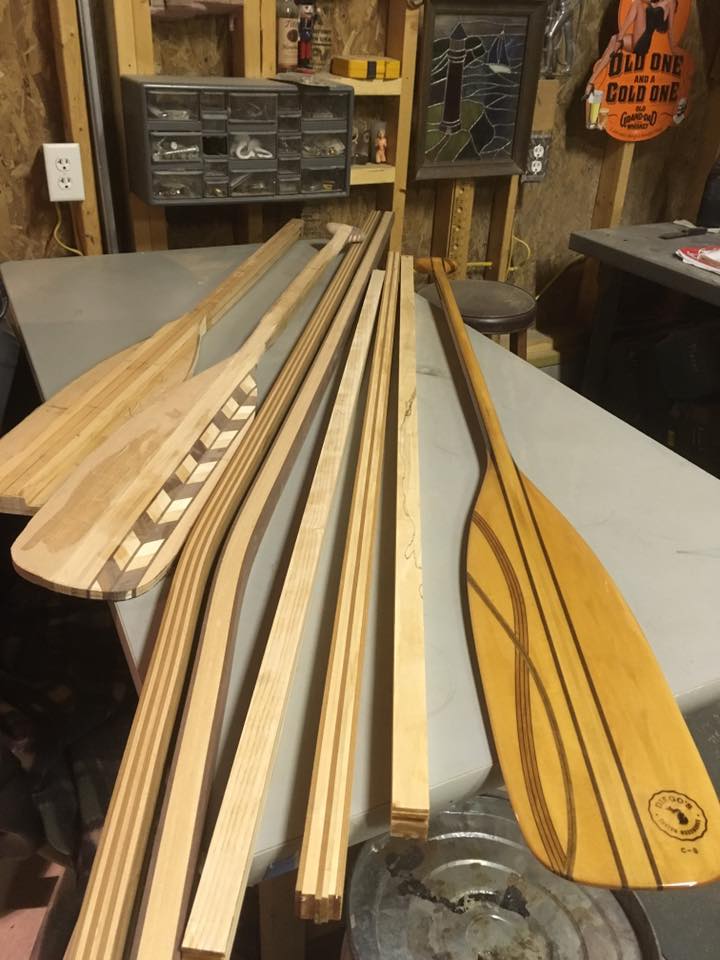Choosing a canoe paddle that suits all your needs and desires is a fairly exhaustive process. Selecting wood as your preferred choice of materials for a canoe paddle is just the beginning. You have many more decisions to make before you hit the water with just the right canoe paddle for you.

Following is a brief discussion on each of the major decisions you will need to make as you go through the process of picking out your preferred wood canoe paddle:
Shaft Material
You can find a canoe paddle with an aluminum or composite shaft and a wooden blade. The purpose of this combination is to make the paddle strong and very light weight. However, the aluminum shaft does not “flex” as well as wood and does not let you “feel” the movement of the water as well as wood. An aluminum shaft is also cold to your hands in cooler conditions, and it is not nearly as aesthetically pleasing as wood.
You can find a canoe paddle with an aluminum or composite shaft and a wooden blade. The purpose of this combination is to make the paddle strong and very light weight. However, the aluminum shaft does not “flex” as well as wood and does not let you “feel” the movement of the water as well as wood. An aluminum shaft is also cold to your hands in cooler conditions, and it is not nearly as aesthetically pleasing as wood.
Blade Shape
There are no limits on the shape a wooden blade can be made into, but there are a few major considerations that can help you choose the best shape for your own use:
- Wide or Narrow. A wider blade gives a bigger bite in the water and can propel your canoe farther with each paddle stroke…but beware of the consequences to your arm and shoulder muscles. Canoe racers often use wider paddles, but remember these are trained athletes, not recreational paddlers. Blade widths usually come in standard widths of 6″, 8″, 10″, and 12″, but can be made in any width. Stick with 8″…no more than 10″…and you should be fine.
- Oval or Square. An oval blade can be either asymmetrical, or slightly concave like a spoon. This spoon feature theoretically helps maintain stability as you pull your paddle through the water. However, the concave blade is more popular with kayakers than with canoeists.
The square blade is primarily in reference to the bottom edge of the blade, and this blade can handle more stress than the oval blade. If you will be paddling in shallow streams with gravel bottoms, you may want to consider a shorter blade with a squared off bottom edge. You can also get a metal edging attached to the bottom edge to guard against excessive abrasion from gravel.
Wood Species
Wooden canoe paddles can be made from any kind of wood, especially if it is laminated and encased in fiberglass, but some woods are naturally more suited to paddle making than others. The selections are quite broad so you should check out the special report on wood species for canoe paddle making here. The main point is that you will have to decide on which wood species you want for your canoe paddle.
Bent Shaft
The bent shaft canoe paddle has gained considerable popularity in recent years, and there are many pros and cons to the concept. For a more complete discussion on the bent shaft paddle, click here. Frankly, if you are a recreational canoeist, the straight shaft paddle should serve you well—it has done so for centuries.
Paddle Length
This factor in choosing a canoe paddle is the most important of all. Having the correct length of paddle can mean the difference between cutting your canoe trip short, or enjoying it to the full. As you can imagine, this topic is also quite extensive, and is presented as a separate document here. If you are going to do any extensive paddling, this is an issue you must address in detail.
So, these are the major considerations you will have to address in choosing a canoe paddle for your personal use. Take your time, study the material here, and elsewhere, and make your choice carefully.